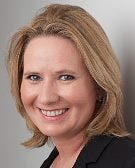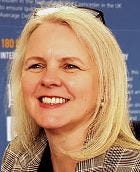Diversity in the Channel: Still a Long Way to GoDiversity in the Channel: Still a Long Way to Go
Despite efforts, less than one in 10 channel leadership positions is held by women.

Calls to improve diversity in the channel are nothing new.
IT leaders and representative bodies have publicly declared a need for people of different genders, ethnicities, ages and disabilities. IT trade association CompTIA recently said diversity “is not a point we can take off of the agenda” in 2020.
Women in IT is probably the most discussed aspect of promoting a more diverse workforce. However, new research suggests the channel still a long way to go.
A survey conducted by IDC indicates that most European channel partners are involved in initiatives to improve diversity. But female representation in leadership positions remains critically low.
Ninety-six percent of channel firms are currently or planning to participate in and/or implement “softer” activities to improve diversity in their own organizations. This includes education, awareness and training.
However, half of those surveyed are doing some of the harder work in terms of changing hiring practices (49%). They also are transforming organizational structures to build more diverse teams (47%) and setting up diversity programs with specific measurable goals (44%).
Despite this, there is still a lack of female representation in leadership positions in the channel. The survey shows that women hold only slightly more than 8% of leadership positions in channel firms.
Where Are the Women?
The report’s author is Margaret Adam, associate VP, IDC Europe. She says diversity in the channel is also an issue for members of the analyst’s partner advisory board (PAB).

IDC Europe’s Margaret Adam
“One midsize partner has more than half of its workforce as female,” she said. “The consensus was they are seeing improvements in the IT industry. This is driven partially by education – more women accessing STEM studies – but also greater awareness.”
Adam said having a diverse workforce means tapping into a different talent pool, not necessarily from within the industry.
“One partner targeted female IT recruiters to join the company as salespeople, and then trained them on technology,” she said. “Having that industry experience was enough of a foothold. Another commented that they have found it easier to recruit females when there is a female leader in the organization. They can ‘motivate, lead, guide, and coach,’ and so female employees can see a career path.”
Another crucial point is whether diversity can now influence the outcome of a deal.
“A partner mentioned that gender equality and the gender pay gap are becoming more important to the point where they could now potentially lose a deal because of this. More partners confirmed that they are analyzing their gender pay gaps and evaluating their workforce diversity,” said Adam.
Boys Club?
Part of the problem may be that the channel has traditionally been regarded as a bit of a boys club. An intense sales environment that embraces a “work hard, play hard” attitude may have been off-putting to women historically.
Adam admits that when she started out in the IT industry, “it was very much a boys club, and whilst my colleagues were by-and-large great, I did become acutely aware of my ‘otherness’ at social events. It made me uncomfortable.”
However, despite elements of this still existing, this appears to be …
… less of an issue in 2020.

Nuvias’ Andrea Horton
“There is still an element of this throughout the industry, but generally, I think the ‘channel club’ is far more inclusive today,” said Andrea Horton, head of marketing (EMEA) – Advanced Networking, at distributor Nuvias.
“You do still see a bias with the plethora of male inspired activities that go on throughout the year – from golf and driving days to football hospitality and race days – all of which I know are enjoyed by many female colleagues. But they have been created to appeal to the males of the industry, exemplifying just how influential they are.”
Culture Change
Horton hopes a new generation of men and women join the industry to drive a change in culture, one where they demand a more diverse workforce and “women are not deterred by the prospect of having to keep up with their male colleagues at the expense of their family.”
Additionally, Sarah Shields, VP, Central and North Europe channel at Dell Technologies, believes “boys clubs only exist if we let them.

Dell’s Sarah Shields
“I think people are looking for inclusive ways to build rapport as diverse groups lead to far more interesting connections. There’s always more to do, but my advice is to not accept the ‘club’ premise and to set up more enticing and diverse ways to build rapport.
“Unconscious bias exists in our world. And it will continue unless everyone makes a concerted effort to call it out and combat it. So, if we don’t feel included, we all must say something and importantly, do something about it.”
How Can the Channel Attract More Women?
So, the big question: What can we do to attract more women and improve diversity in the channel?
The most important issue is getting women and girls interested in the industry in the first place. That’s according to Amanda Gascoyne, head of sales, UK & Ireland, at distributor Westcon.

Westcon’s Amanda Gascoyne
“I believe that once you are in the door as a woman, you will receive the same amount of support and encouragement. It’s important to get into schools, colleges and universities, and make it clear to girls as well as boys that this is an industry they can thrive in.”
Another critical way to make the channel more attractive is to increase the visibility of women role models.
“Initiatives that celebrate women in the channel are important as well. We need to shout about the positive messages, and how this is a great industry to work in,” said Gascoyne.
IDC’s Adam feels there needs to be a bit more glamour in the channel.
“It may sound silly, but it matters! I do a lot of presenting at industry forums, partner summits, conferences and so on. When I do, I make sure that I wear kick-ass shoes. Optics matter, and nothing screams ‘lacking diversity’ than row after row of branded hoodies, chinos or grey suits.”
She also believes it makes a difference how employers word job specifications.
“Women tend not to be drawn to words like ‘hunter,’ ‘aggressive seller’ and ‘deal closer.’ There are actually apps to help reword job specs in a way that is more female friendly,” she said.
STEM Push a Mistake?
Jane Craven, director at audio brand, EPOS, believes the channel needs to ensure that STEM studies are championed in the education system. This is to increase awareness about …
… what types of careers are available, and to shine a spotlight on women leading the charge.
“Our No. 1 priority must be to support and uplift one another in the industry. This starts with education and setting a foundation. We can only hire more women in IT if they have access to the skills needed for roles in the first place,” she said.
Interestingly however, IDC’s Adam thinks the emphasis on promoting STEM to girls has actually had the opposite effect.
“It has had the unintended consequence of dissuading a lot of young female talent, who think you need to be a math or science genius to have a career in the tech industry. That is just not true. The channel needs to do a better job of explaining the diversity of roles they can offer. But as an industry, we need to do a better job or articulating this and promoting it as an industry at school age.”
COVID-19 Impact
We are at an interesting point in the discussion of gender diversity. We are witnessing a groundswell of social activism on the news, in the streets and in the workplace. At the same time, firms have had to embrace a whole new way of working due to COVID-19.
Keep up with the latest developments in how the channel is supporting partners and customers during the COVID-19 crisis. |
This enforced culture change could lead to the realisation that you can be successful with a flexible workforce. One of the biggest challenges for women is being able to return to work after having children or juggling child care.
“I hope everyone is inspired to move forward with a better work-life balance, driven by our many male channel business leaders who have enjoyed being at home more,” said Horton.
“We need to encourage our future female leaders to see a more balanced life and career ahead of them without having to make difficult compromises. Hopefully, we can inspire a greater representation of females amongst our channel leaders in the next 10 years.”
About the Author
You May Also Like


